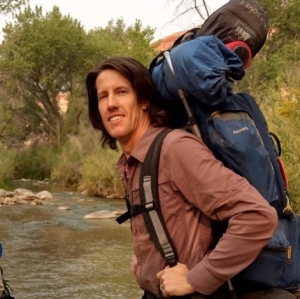Aquatics Biologist
Great Salt Lake Brine Shrimp Cooperative, Inc.
Bio:
Phil Brown has a background in limnology. He graduated with a B.S. in Watershed Sciences from Utah State University, where he had the opportunity to work for Wayne Wurtsbaugh in the disparate ecosystems of the Sawtooth Mountains and Great Salt Lake and gain an appreciation for the diversity in aquatic systems. He graduated from Oregon State University with a M.S. in Fisheries Science studying the effects of agricultural water withdrawals on river invertebrates, before making the jump back to hypersaline. He has been involved in the Great Salt Lake ecosystem and Artemia population monitoring since 2008, first as a biologist for the DWR Great Salt Lake Ecosystem Program, and for the past 9 years with the Great Salt Lake Brine Shrimp Cooperative researching long term population trends of the Artemia and phytoplankton populations, and monitoring the Lake’s nutrients, salinities, and deep brine layer.
Title: Salt load transfer and changing salinities across the new causeway breach in Great Salt Lake: 2016-2021
Abstract: The Union Pacific railroad causeway separating Gunnison and Gilbert bays has been a primary driver of salt distribution within Great Salt Lake for six decades, but the degree of connectivity between bays has varied with the condition of the culverts. The opening of the new causeway bridge in December 2016 increased flow between the bays and was predicted to raise Gilbert Bay salinities at a given elevation. Recognizing the potential significance of these salinity increases to the bay’s ecology, the Great Salt Lake Brine Shrimp Cooperative expanded its long-term routine measurement of Gilbert Bay salinities prior to the 2016 bridge opening. Nearly six years later, this ongoing dataset has revealed substantial changes in the relationship between salinity and elevation, and fluctuation in the calculated salt load of Gilbert Bay since 2016. The bridge opening and high spring runoff in 2017 resulted in the export of 17% of the Gilbert Bay salt load into Gunnison Bay, and a reduction in elevation-specific salinity for the next two and a half years. However, more than 90% of that salt has since returned to Gilbert Bay and elevation-specific salinity has been increasing for the past two and a half years. The Lake declined to a record low volume in 2021, and combined with the returned salt load, salinities approached the upper tolerance range for Artemia and led to concerns about the pelagic ecology of Gilbert Bay if the lake should drop further in the coming years. The lake elevation ranges over which salinities would remain tolerable for the Artemia population are given for several plausible salt load scenarios, and suggest that adaptively managing the control berm at the 2016 bridge opening could have a meaningful effect in mitigating further elevation declines.

